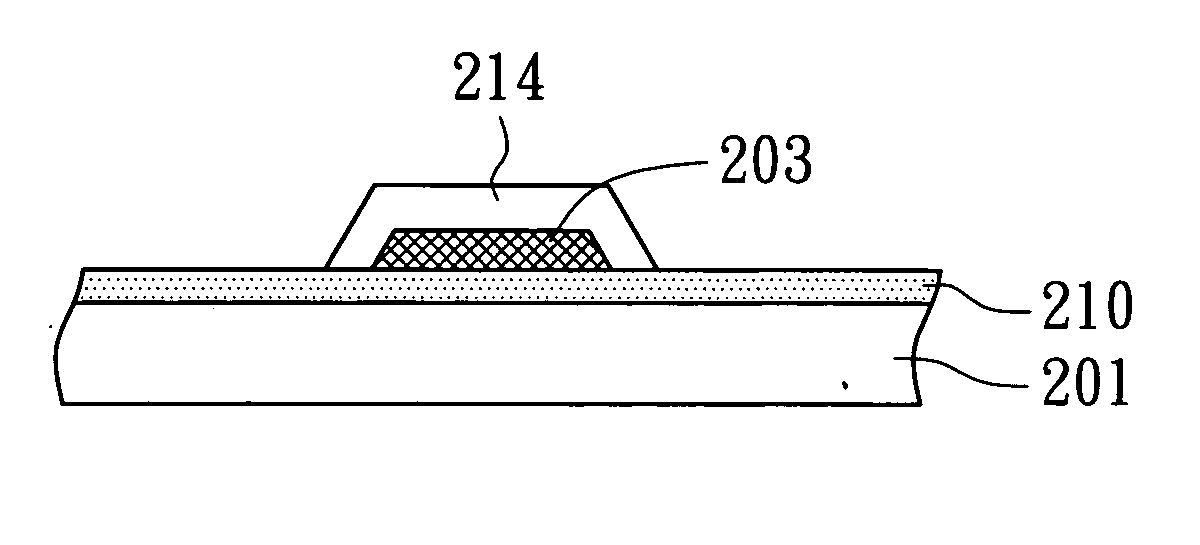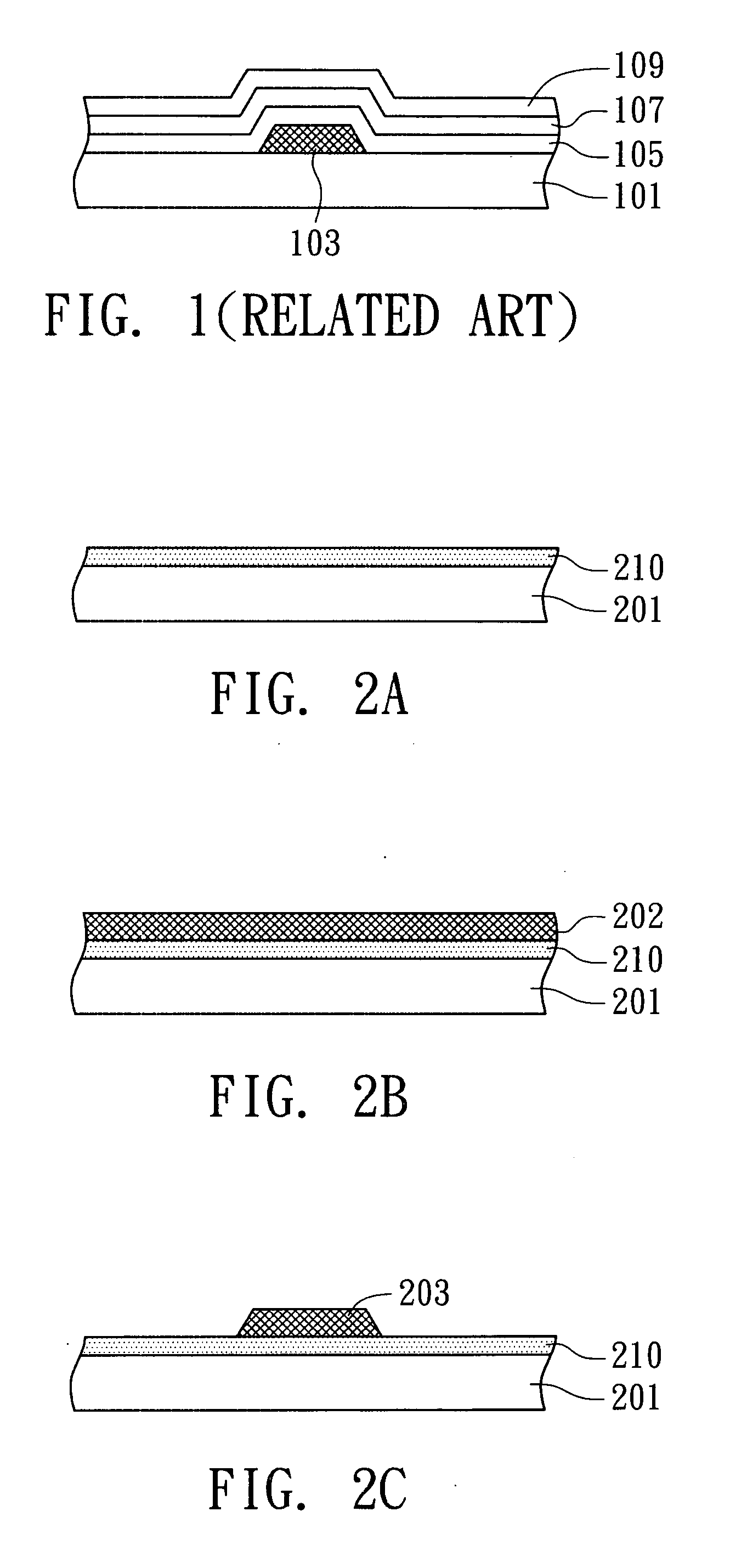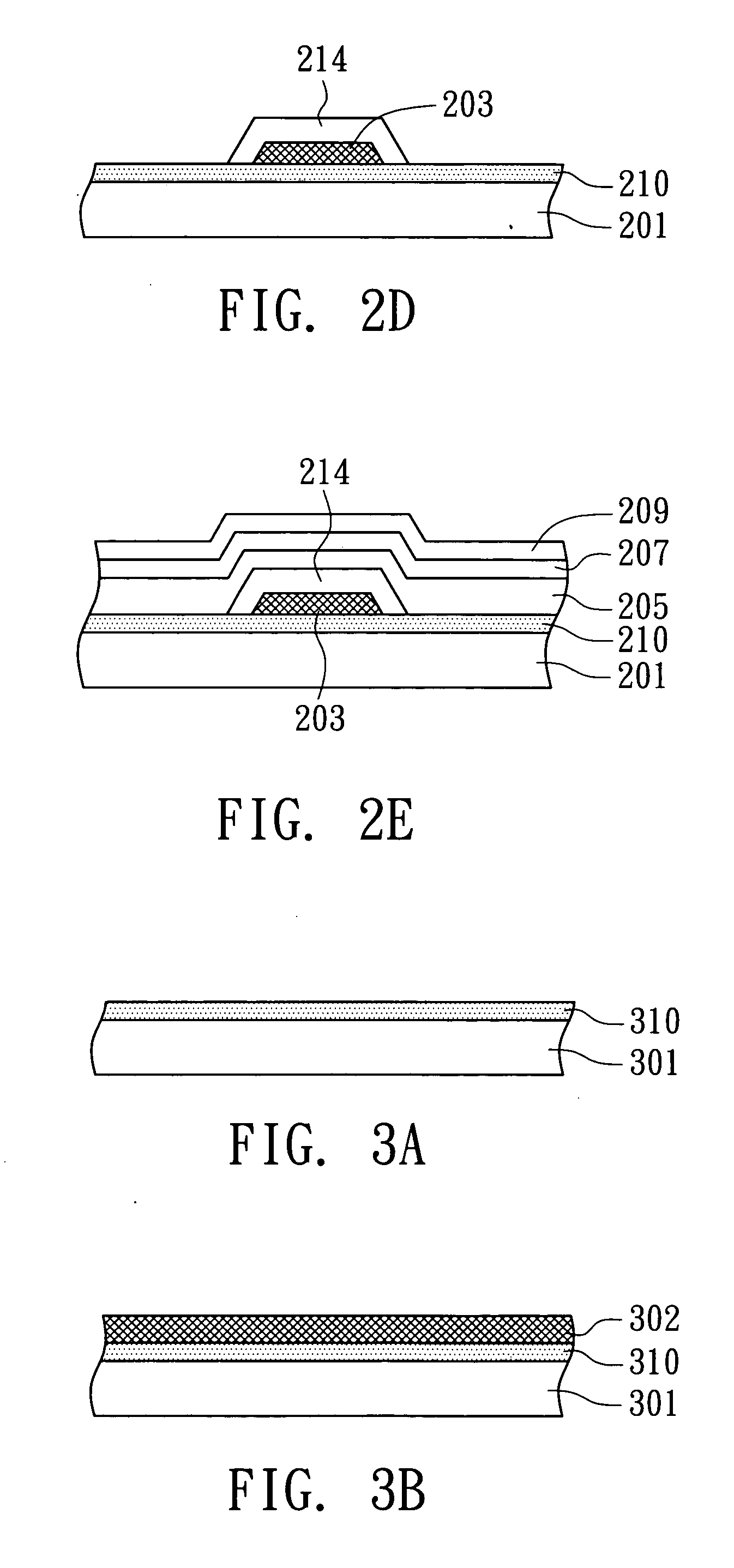Copper gate electrode of liquid crystal display device and method of fabricating the same
a liquid crystal display device and gate electrode technology, applied in the direction of solid-state devices, basic electric elements, thermoelectric devices, etc., can solve the problems of difficult control of the taper angle of the patterned copper layer, surface oxidation quickly occurring, and the conventional process of fabricating the gate electrodes using copper still has several problems to be solved, so as to enhance the electrical properties of the applied product and increase the adhesion strength between copper and silicon
- Summary
- Abstract
- Description
- Claims
- Application Information
AI Technical Summary
Benefits of technology
Problems solved by technology
Method used
Image
Examples
first embodiment
[0020]FIG. 2A˜FIG. 2E illustrate a partial process for fabricating a TFT-LCD according to the first embodiment of the invention. First, a glass substrate 201 pre-cleaned by deionized water is provided. An adhesion layer 210 is preferably formed on the glass substrate 201, as shown in FIG. 2A. The adhesion layer 210 could be formed by spin coating or spinless coating. The material of the adhesion layer 210 is the polymer comprising at least one of nitrogen and phosphorus, such as polysilane (with high transparency and thermal stability), photosensitive methylsilazane (PS-MSZ) and non-photosensitive MSZ (available from Clariant Cop.) The thickness of the adhesion layer 210 is ranged from about 100 nm to about 3000 nm.
[0021] Then, a copper layer 202 is formed (e.g. sputtered) on the adhesion layer 210, as shown in FIG. 2B. The copper layer 202 is then defined (i.e. patterned) by photolithography. For example, a photo-resist (PR) layer is formed above the copper layer 202, and the PR l...
second embodiment
[0026]FIG. 3A˜FIG. 3G illustrate a partial process for fabricating a TFT-LCD according to the second embodiment of the invention. First, a glass substrate 301 pre-cleaned by deionized water is provided. Then, an adhesion layer 310 is preferably formed on the glass substrate 301, as shown in FIG. 3A. The technique of spin coating or spinless coating could be used in the formation of the adhesion layer 310. The material of the adhesion layer 310 is the polymer comprising at least one of nitrogen and phosphorus, such as polysilane (with high transparency and thermal stability), photosensitive methylsilazane (PS-MSZ) and non-photosensitive MSZ (available from Clariant Cop.) The thickness of the adhesion layer 310 is preferably ranged from about 100 nm to about 3000 nm.
[0027] Then, a copper layer 302 is formed (e.g. sputtered) on the adhesion layer 310, as shown in FIG. 3B. The copper layer 302 is patterned by photolithography. For example, a photo-resist (PR) layer is formed above the ...
PUM
| Property | Measurement | Unit |
|---|---|---|
| thickness | aaaaa | aaaaa |
| thickness | aaaaa | aaaaa |
| thickness | aaaaa | aaaaa |
Abstract
Description
Claims
Application Information
 Login to View More
Login to View More - R&D
- Intellectual Property
- Life Sciences
- Materials
- Tech Scout
- Unparalleled Data Quality
- Higher Quality Content
- 60% Fewer Hallucinations
Browse by: Latest US Patents, China's latest patents, Technical Efficacy Thesaurus, Application Domain, Technology Topic, Popular Technical Reports.
© 2025 PatSnap. All rights reserved.Legal|Privacy policy|Modern Slavery Act Transparency Statement|Sitemap|About US| Contact US: help@patsnap.com



